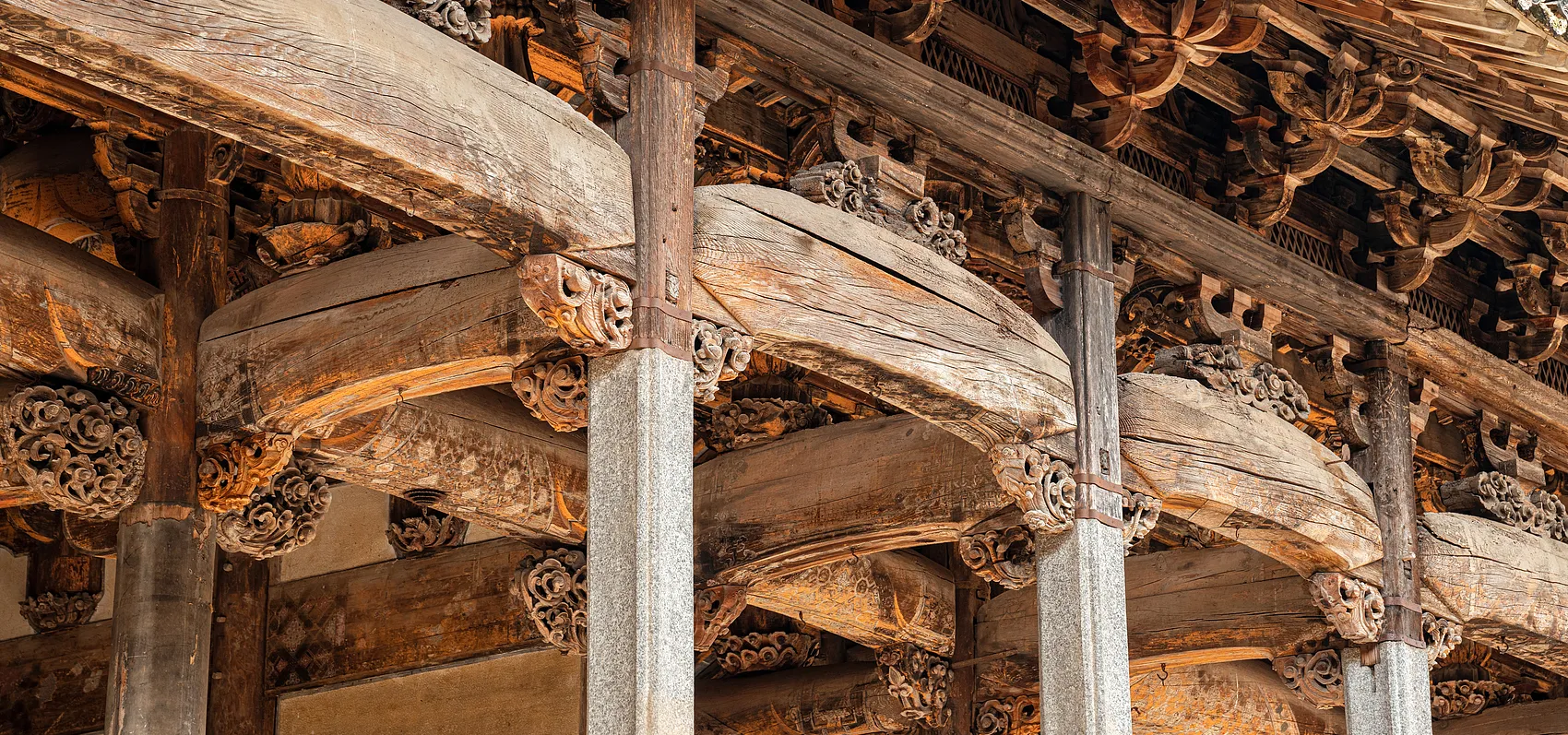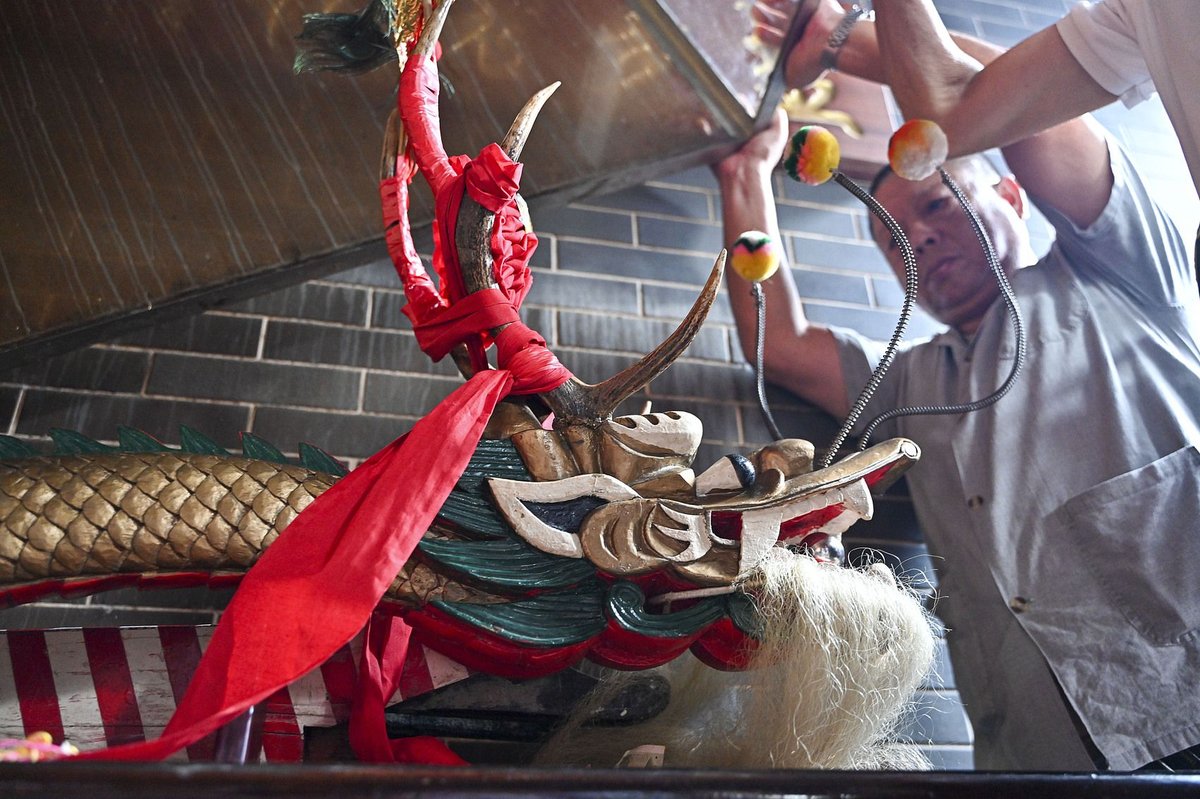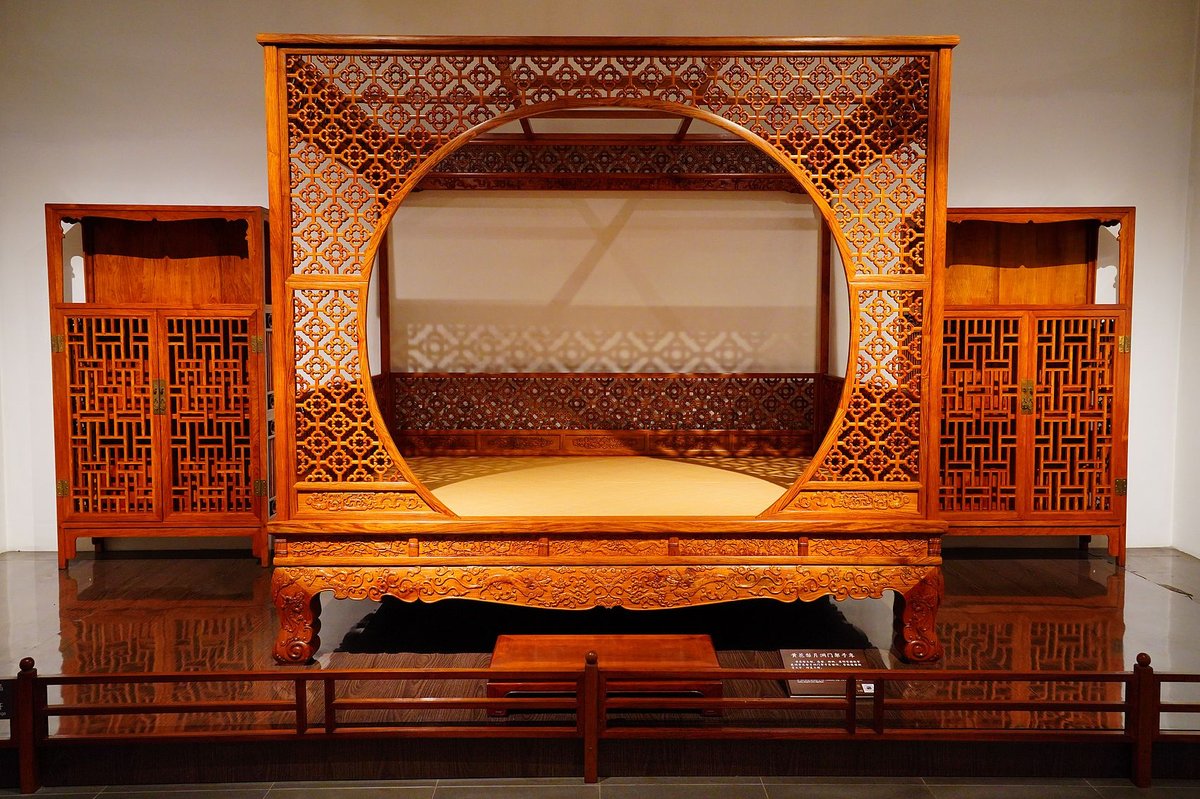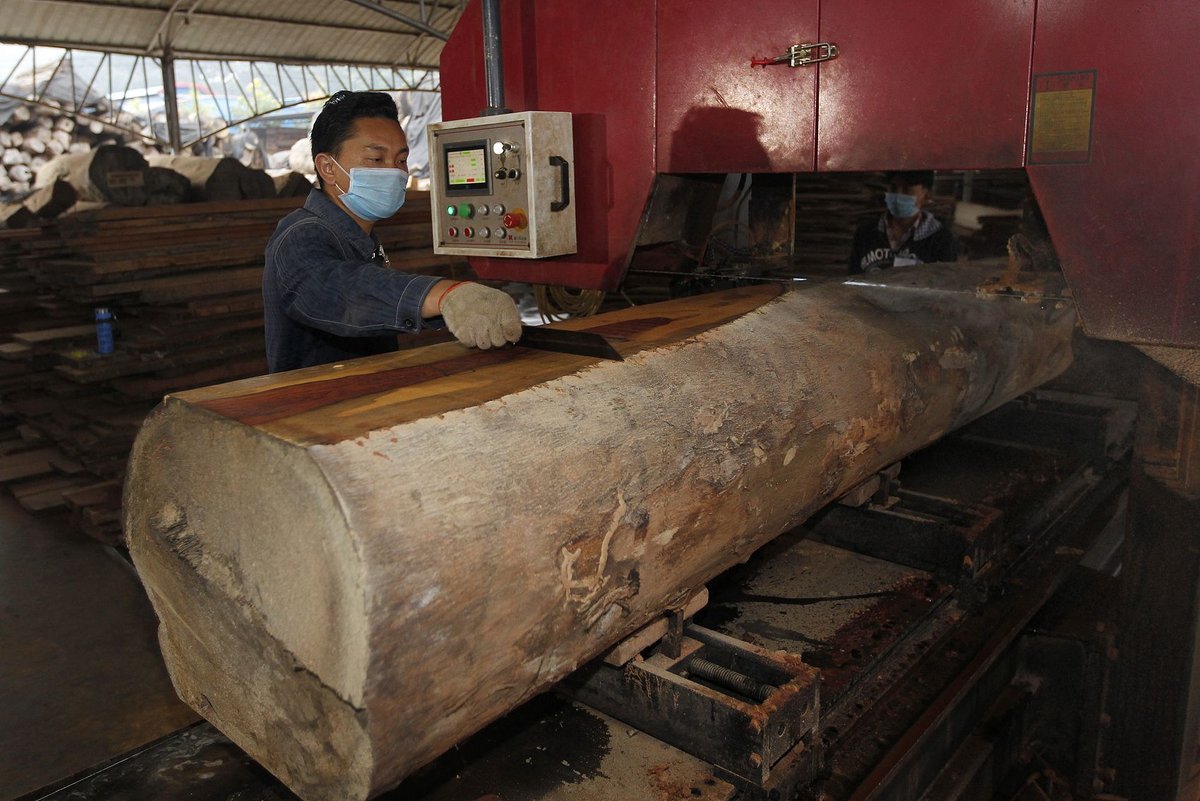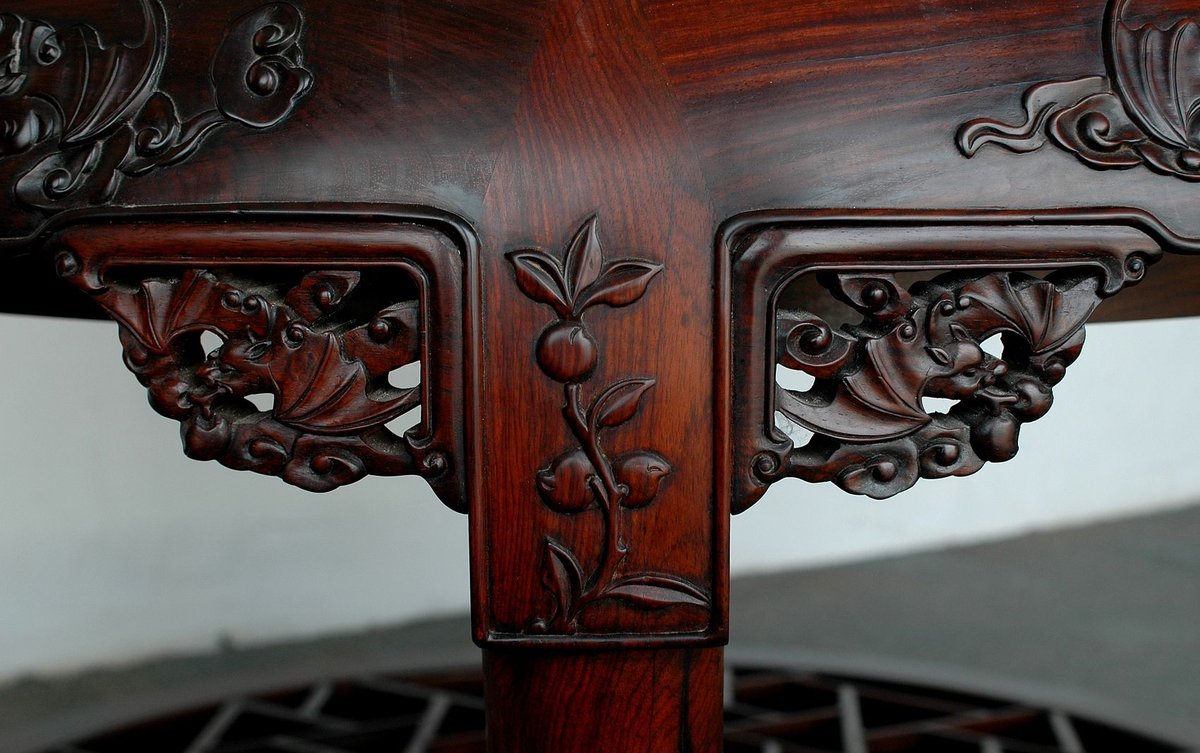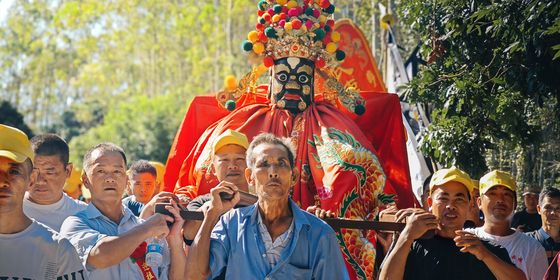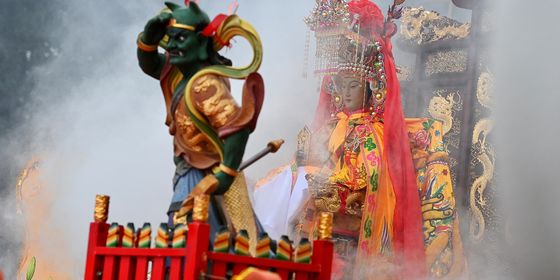Wood and the objects born from it have been coveted throughout Chinese history, but as access dwindles and consumer preferences change, it’s slowly losing its sheen
When Changsha’s “Chinese Phoebe Wood Old House Cultural Tourism Museum” burned down in May, netizens mourned the loss of what could be considered a national treasure, along with the rare antique wooden furniture it housed. The curator had previously claimed that the wooden structure was over 400 years old and valued at 1.6 billion yuan—an astonishing figure, but not entirely unrealistic, considering that Phoebe wood, nicknamed “the gold of wood” in China, is highly prized for its silky sheen.
While many have gone on to questioned the authenticity of the architecture, given that Phoebe wood, a prized material for palaces and temples in ancient China, has a high ignition point of 260 degrees Celsius, the authorities’ eventual estimate of the loss was only around 2.7 million yuan. The headline news still reignited public debate over the enduring yet complicated relationship between humans and wood in China.
For centuries, wood—especially rare species like nanmu (楠木, Phoebe wood), huanghuali (黄花梨, Chinese rosewood), and zitan (紫檀, red sandalwood)—has played a central role in everything from music-making to maritime expeditions, and remains a status symbol among older generations. But does it still hold the same appeal for young people today?
Read more about the modern adaptation of Chinese traditions:
- Scent Across Time: How Traditional Fragrances Quiet the Clamor of Modern Life
- Bitter No More: How Young Chinese Became Obsessed With TCM
- Why are Chinese Doctors’ Offices Full of Red Pennants?
As early as the Warring States period (475 – 221 BCE), nanmu was already used by nobles and elites. Known for its natural fragrance, dense structure, and fine grain, nanmu is also resistant to cracking and warping after processing, making it ideal for architecture and high-end furniture.
When the tomb of Marquis Yi of Zeng from around the period was discovered in Hubei province in 1987, archaeologists found that the entire burial chamber was built using 500 cubic meters of mature nanmu. The structure, including floorboards, wall panels, and cover boards, was constructed from 171 massive nanmu planks. The main coffin, also made of nanmu and elaborately painted, was mounted on a bronze frame and weighed approximately 7,000 kilograms.
By the Tang dynasty (618 – 907), the pipa, a lute-esque instrument whose name literally means “forward and backward pluck,” had become especially popular among aristocrats. Thanks to its eye-catching purple hue, fine texture, and stable sonic resonance, zitan became the wood of choice to make these instruments. At the time, the poet Bai Juyi (白居易) likened a pipa’s clear and crisp sound to “large pearls and small pearls falling on a jade plate.”
Centuries later, tropical hardwoods from Southeast Asia began reaching China in greater volume, and as trade expanded, the port city of Pontianak on Indonesia’s Kalimantan Island became a major export hub. To simplify the classification of these imported timbers, which have varied and complex names, Chinese traders began referring to them collectively as “Pontian wood,” a term still used in the timber industry today.
In Guangdong, Pontian wood was often used to make dragon boats owing to its resistance to decay and termites. Each year, following intense races, the boats are retired to nearby riverbanks, where they are caked in mud to preserve them for the following year. As a testament to Pontian wood’s durability, the oldest surviving dragon boat, complete with a dragon head and flowing white beard, is estimated to be 593 years old. Today, building a 40-meter dragon boat from Pontian wood costs around 400,000 yuan.
Between 1405 and 1433, Chinese explorer Zheng He (郑和) undertook seven sea voyages, reaching as far as India and East Africa, and carrying with him a type of yellow hardwood known as huanghuali, a wood particularly resistant to temperature fluctuations. It served both as prized cargo and ballast to steady his ships and became a highly coveted material for furniture among carpenters during the Ming (1368 – 1644) and Qing (1616 – 1911) dynasties.
Ming and Qing craftsmen often followed the Daoist belief of “letting nature take its course,” working with the wood’s grain and believing that the pattern itself reflected the inner order destined by Heaven and Earth. When they encountered defects such as tree tumors or insect damage, they would incorporate them into the design, adding distinctive flourishes to the furniture.
However, as the country endured decades of war and uncertainty after the fall of the Qing, these coveted items gradually disappeared, lost, destroyed, or housed in museums, making surviving pieces in private hands rare, and those with an eye for their true value even rarer.
As the proud owner of a bed made from huanghuali, Wu Lin, an elementary school teacher from Zhejiang’s Ningbo city, is an exception. “Around the 1950s, a wealthy family was preparing to go to Hong Kong and wanted to sell their belongings,” the 37-year-old tells TWOC. “My grandfather had his eye on their huanghuali bed, as he had been a carpenter for many years and knew it was a treasure.”
Wu admits that the highly valued bed probably didn’t cost her grandfather much, as he was only earning around 16 yuan a month as a carpenter at Ningbo’s Ayuwang Temple at the time. After her grandfather passed away decades later, the family discovered that the bed, dating back to the late Qing dynasty, was reportedly worth at least 2 million yuan.
Known as an “eight-step bed”—a playful exaggeration of the number of steps it takes to climb into it—beds like Wu’s are comparable to a standalone room made entirely of wood, with some models even coming with an in-built corridor that includes space for a dresser and toilet.
Using a traditional technique known as sunmao (榫卯), which employs interlocking concave and convex joints without the need for nails, Wu’s bed is exceptionally sturdy and can withstand strong external forces, including those from earthquakes, and is considered a status symbol in southern China. Wu has used it since childhood.
“It even has a canopy, like a pavilion in a Chinese garden. Lying in it, I feel a sense of tranquility,” Wu says. “It’s covered in intricate openwork carvings. When I couldn’t sleep as a child, I’d run my fingers over them for fun. They have a distinct Ningbo style, such as a waxberry tree with a little deer who wants to eat the fruit. The bed carvings used to inspire me to make up stories to amuse myself.”
Xi Wang, a local from Jiangmen, Guangdong province in southern China, also has a fond memory of growing up with wooden furniture. In Guangdong’s hot and humid climate, sitting on a leather sofa can be uncomfortable. “But when you lie on wooden furniture, you feel cool to your core—the wood is hard and incredibly smooth. The more you use it, the glossier it becomes, just like jade,” Xi says.
When her parents married in the 1980s, they purchased a kangchuang (炕床), a flat, wooden structure that functions like a couch, made of hongmu (literally “redwood” in Chinese), a type of prized rosewood known for its wine-colored sap that dries into deep purple-red hues, from a nearby furniture factory. “In Guangdong, dowries often include hongmu furniture. It’s seen as a status symbol and can be passed down to the next generation,” Xi, now in her early 30s, explains. “When you put the heavy hongmu furniture in a new home, it means you are serious about settling down.”
The furniture Xi’s parents purchased is also adorned with auspicious motifs for a new household: bunches of grapes symbolize fertility and the generations to come, while bats represent “luck flying home,” their Chinese name, fu (蝠), sounds the same with fu (福), meaning fortune. “They are said to protect the household,” she says.
As fine hongmu matures over the course of a century, absorbing the energy of Heaven and Earth, it is believed to acquire mystical, evil-dispelling powers—a belief that endures in Guangdong to this day.
“As a kid, I’d take afternoon naps on that bed, waking up just in time for cartoons. One time, my cousin brought over a DVD of a Hong Kong zombie movie,” she says. “I wrapped myself up in a blanket, shaking, too scared to watch. My cousin just laughed and said, ‘What are you afraid of? Zombies don’t even dare go near hongmu!’”
However, the demand for such furniture is dwindling, with many young people considering wood furniture dated and tacky when it comes to home decor. Even those still hoping to purchase real wood furniture are taken aback by the soaring prices of valuable timber like hongmu, driven up by limited raw materials and rising manufacturing and management costs at local factories.
In 2017, China’s ban on commercial logging pushed furniture makers to turn to imported timber from Russia and Southeast Asia. Many along the Yunnan border have crossed into neighboring Myanmar in search of it. But life in Myanmar’s logging camps is harsh. Workers often toil all day with chainsaws and sleep in ramshackle tents deep in the forest. In 2015, 155 Chinese loggers were arrested by Myanmar authorities during a crackdown on militias, to whom Chinese bosses had been paying for logging rights and protection. They were later released under a general amnesty. Back in China, factories also face mounting costs: inspection fees, customs duties, and local taxes.
“Several hongmu furniture factories in my area have closed down,” Xi, who remains a diehard fan of hongmu, laments.
Wu, on the other hand, wouldn’t personally buy any more wooden furniture. Though she still treasures the huanghuali bed passed down from her grandfather, “it is just too heavy,” she says. When they tried to move the bed, even with eight men lifting each leg, it didn’t shift an inch.
“Solid wood beds are alive in a way—like people, they have tempers. And the older they get, the more stubborn they become,” Wu jokes. “So I gave up and just let it stay in the back room. Thankfully, I live in the countryside, where houses are big enough. You could never fit something like this in a tiny city apartment.”
China’s Rare Woods: Bearers of Beauty, Toil, and the Supernatural is a story from our issue, “Urban Renewal.” To read the entire issue, become a subscriber and receive the full magazine.





